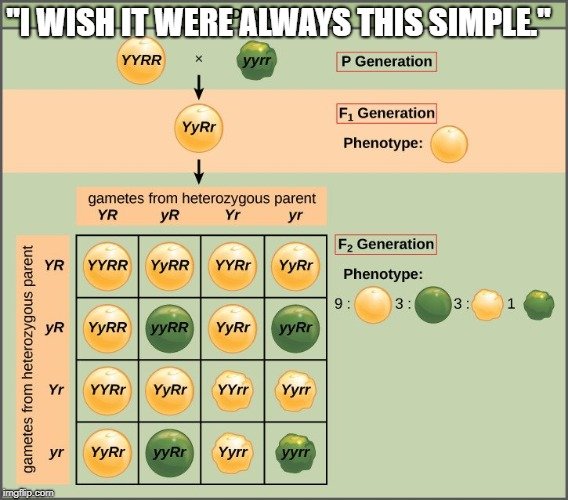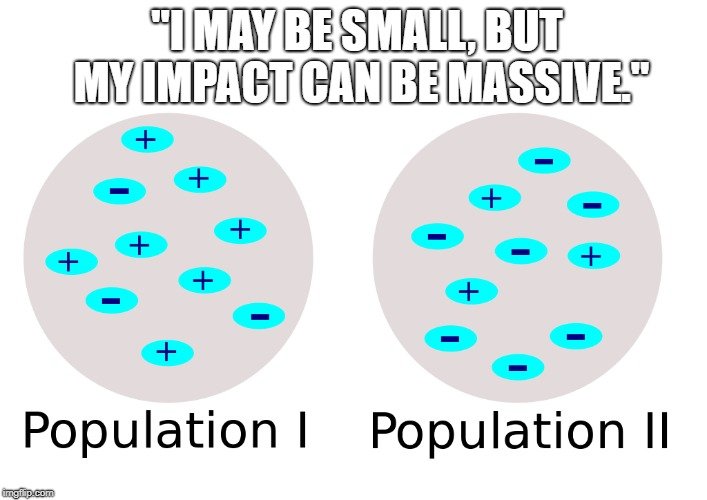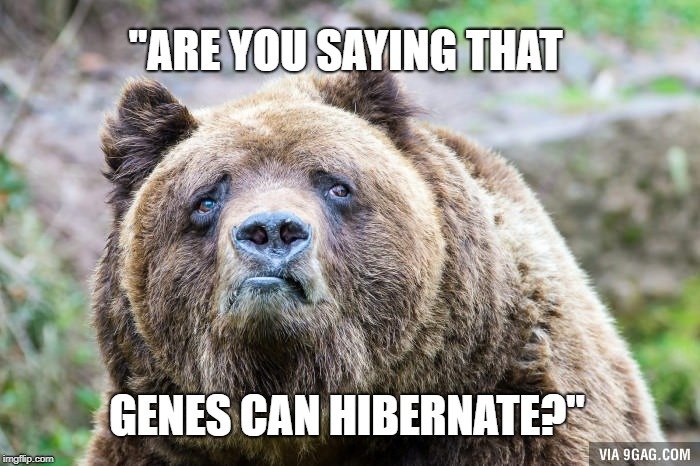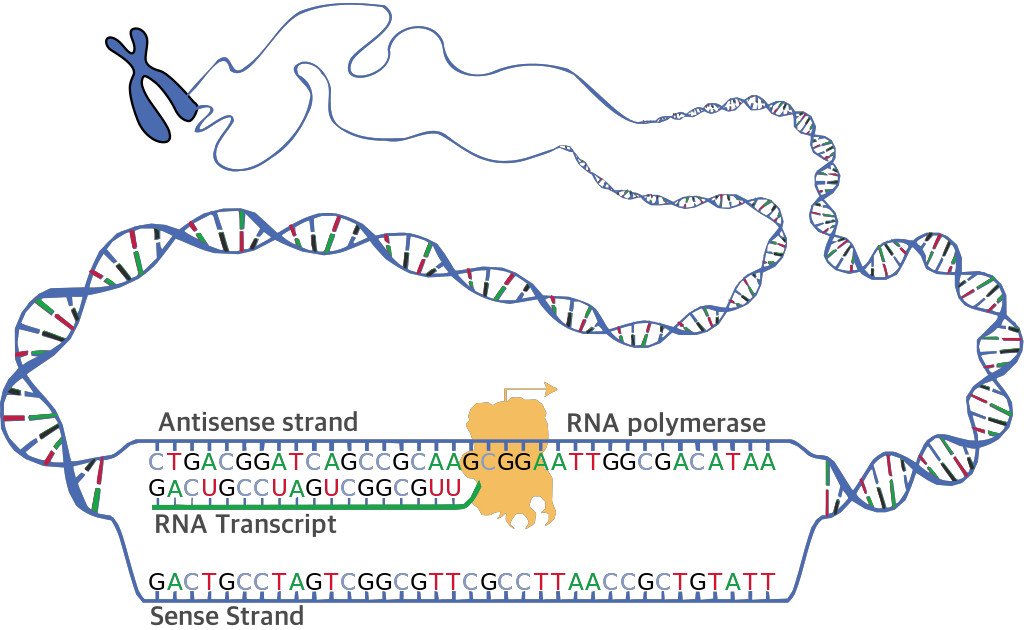Table of Contents (click to expand)
By definition, pleiotropy is a situation in which one gene controls for the expression of multiple phenotypic traits. These traits don’t have to be clearly linked, i.e., eye shape and eye color, but can instead be completely unrelated.
If you remember back to your high school science classes, genetic crosses probably made an appearance at some point. Perhaps you remember the 4-square diagram on your exams, along with Mendelian mathematics, where the offspring of an AA x BB cross would have an AB genotype. These rudimentary genetic crosses were an introduction to how multiple traits and alleles combine during reproduction. However, for the vast majority of genes, the story is not so simple.

There are numerous types of genetic inheritance; straightforward Mendelian inheritance is just the least complex example. One of the least discussed – but most interesting and potentially problematic – is pleiotropy.
What Is Pleiotropy?
By definition, pleiotropy is a situation in which one gene controls for the expression of multiple phenotypic traits. These traits don’t have to be clearly linked, i.e., eye shape and eye color, but can instead be completely unrelated. In many cases, this multi-trait effect is because a gene codes for a certain product, whereas that protein/product serves multiple purposes in the body, catalyzes numerous reactions or interacts with various signal receptors. In this way, a single gene is able to have a measurable impact on different systems.
Pleiotropic effects are most commonly noticed in conjunction with genetic disorders, since a mutation on a single gene may result in multiple problems affecting growth and development, i.e., height, weight, skeletal development. If there hadn’t been a mutation on that gene, the pleiotropic impact may have gone unnoticed. Some of the genetic disorders linked to pleiotropy include sickle cell anemia, Marfan Syndrome and Phenylketonuria, among others.
There are various types of pleiotropy, including developmental pleiotropy, gene pleiotropy, selectional pleiotropy and antagonistic pleiotropy, all of which we will discuss in more detail below.
Also Read: What Are Monogenic And Polygenic Traits?
Types Of Pleiotropy
While pleiotropy is defined quite narrowly in terms of its effects (one gene impacting multiple phenotypic aspects), there are still some minor differences in expression, resulting in the different categories below.
Developmental Pleiotropy
This is the variation of pleiotropy that receives the most attention, as it relates to gene mutations and subsequent developmental disorders. This form of pleiotropy is when a mutation has more than one effect on the resulting phenotype of the offspring. A classic example of this type of pleiotropy is phenylketonuria, a human disease that emanates from a single mutation on chromosome 12. By affecting various systems in the body, this mutation can prevent the body from properly regulating the levels of a key amino acid, phenylalanine. Genes that are defined by this type of pleiotropy are widely studied because of their impact on health and survival.

Selectional Pleiotropy
The difference between this type and the one explained above is minor, but critical. While developmental pleiotropy relates to a mutation on a gene that affects multiple phenotypic aspects, selectional pleiotropy relates to the different components of fitness that are affected by the mutation. In other words, genes with this form of pleiotropy appear more susceptible to local adaptation. This has lead to extensive research into such genes to better understand their sex-linked nature, or their variability based on natural selection. Selectional pleiotropy is also connected to life histories and patterns in populations, where fitness may be affected in different ways by the same gene at separate stages of life.
Gene Pleiotropy
Also known as molecular-gene pleiotropy, this is a classification for genes based on the number of functions it has. These functions can be measured genetically, based on how many traits are affected by the gene, or biochemically, which is linked to the number of reactions a particular protein coded by the gene will catalyze. This is the most basic form of pleiotropy, and is not necessarily connected to genetic disorders or an increase/decrease in fitness.
Antagonistic Pleiotropy
This is a fascinating form of pleiotropy, specifically because it affects everyone to a certain degree. In this context, a gene will have a beneficial effect on fitness at one point in an organism’s life, but a negative impact on fitness at a separate point in that organism’s life. This balance between benefit and detriment is why many claim that genetic perfection is impossible. These antagonistic pleiotropic genes are found in many different forms, but a classic example is a gene that controls the regular menstrual cycles early in life, as well as the decrease in fertility as a result of menopause. This single gene improves reproductive chances when it is viable, and lowers a woman’s ability once viability drops (as a result of aging). The most interesting thing about this form of pleiotropy is that it can be affected by the environment, resource availability and various other external factors.

Antagonistic pleiotropy is often blamed for senescence and aging, as research has found that the body begins to shift resources away from proper DNA transcription and repair as we get older, a “decision” controlled and triggered by pleiotropic genes. Those resources are instead used for other forms of muscular or neuronal function, rather than eliminating or correcting damaged cells or DNA, respectively. As these DNA “errors” accumulate through time, the signs of aging become more prominent as those cells replicate. Another classic example of this antagonistic relationship is a gene that can control cancer growth, but also limits stem cell production, which can help to regrow new tissue as we age.

Also Read: What Is Mendel’s Law Of Dominance?
A Final Word
While many of mankind’s most feared diseases are linked to pleiotropy, this is an unavoidable complexity of the human genome. Over the course of millions of years, various loci on a gene became linked, such that the phenotypic responses to that gene would come as a package deal – whether those phenotypic changes were good or bad for overall fitness. Research into these multi-faceted genes will certainly continue, as their interrelationships may still hold some of our species’ deepest secrets about illness, ongoing evolution and the aging process!
How well do you understand the article above!

